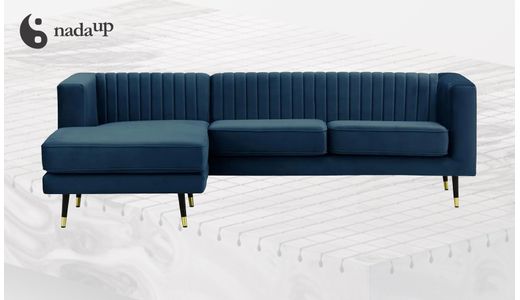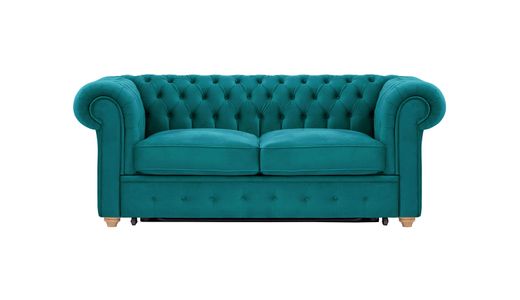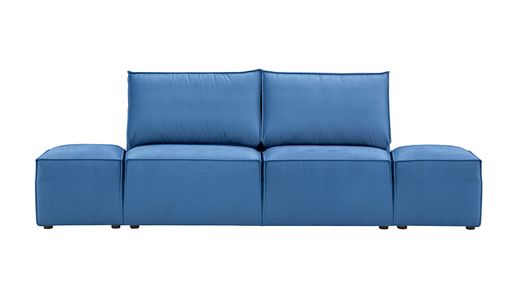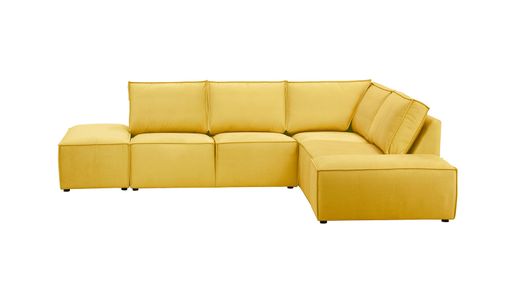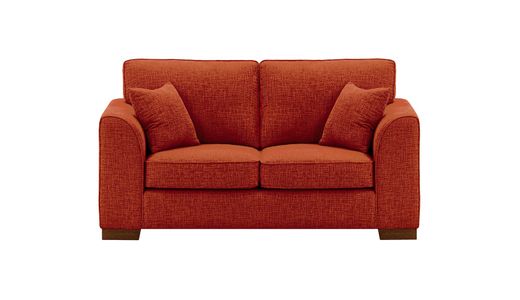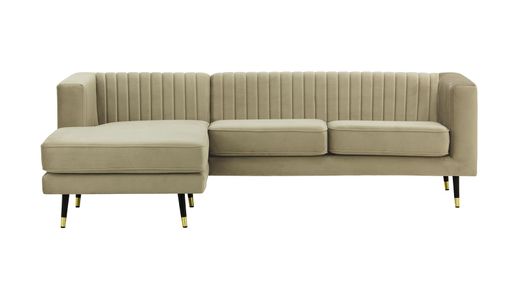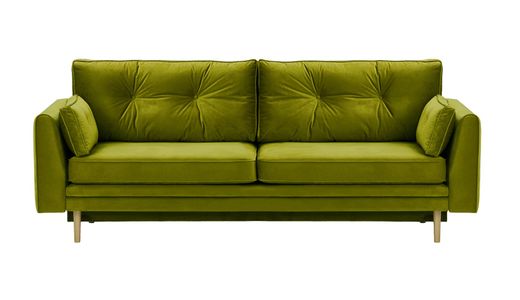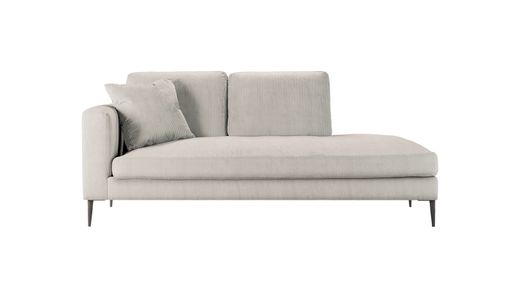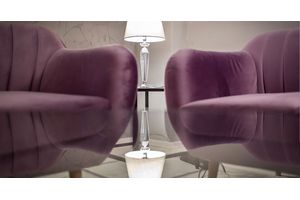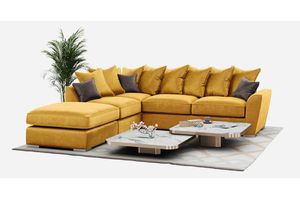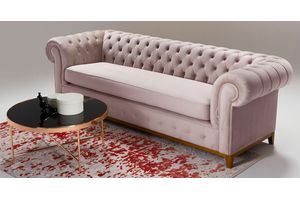
Sofas in intense colours
In today's article, we will delve into the fascinating world of vibrant sofa colors and their role in creating unique and expressive interior spaces. Choosing the color of a sofa is not just a practical decision about furniture but also an opportunity to express personal style and artistic expression. Let's immerse ourselves in the world of colors, discovering how they can influence our environment.
Choosing Vibrant Colors
Let's start with deep, intense colors that become the defining element of a sofa. A green sofa evokes associations with nature, bringing calmness and harmony to the interior. Choosing a green sofa can be like a breath of fresh air, combining comfort with natural beauty. On the other hand, a red sofa is a bold choice, adding passion and drama to the room. If attention-grabbing is the goal, red can become the central focal point of the space.
When opting for a green sofa, it's worth experimenting with different shades, such as mint or bottle green. Each shade can introduce subtle changes in the room's atmosphere, from gentle and cozy to fresh and energizing. A red sofa can be interpreted in various ways. Orange-red brings warmth and energy, while burgundy creates an atmosphere of luxury and elegance. It's an excellent way to emphasize the room's character through the color of the main furniture. If you're considering sofas in these colors, check out SLF24 store suggestions: Gosena Wood 2 Seater Sofa and Majestic New Left Hand Corner Sofa with Loose Back Cushions.
Diversity of Sofa Colors and Their Impact on the Room
The variety of sofa colors is a crucial element in interior design. Deep shades of intense colors bring character to the room, giving it individuality. A green sofa can symbolize peace, while a red one adds an energetic character. The choice of sofa color depends on personal preferences and the intended effect in the arrangement. By mixing different shades, we create a palette that tells a unique story for each interior.
It's also worth experimenting with combining intense sofa colors with accessories in contrasting tones. For example, yellow cushions on a green sofa can add joy and optimism to the room, while navy accessories on a red sofa bring elegance and harmony.
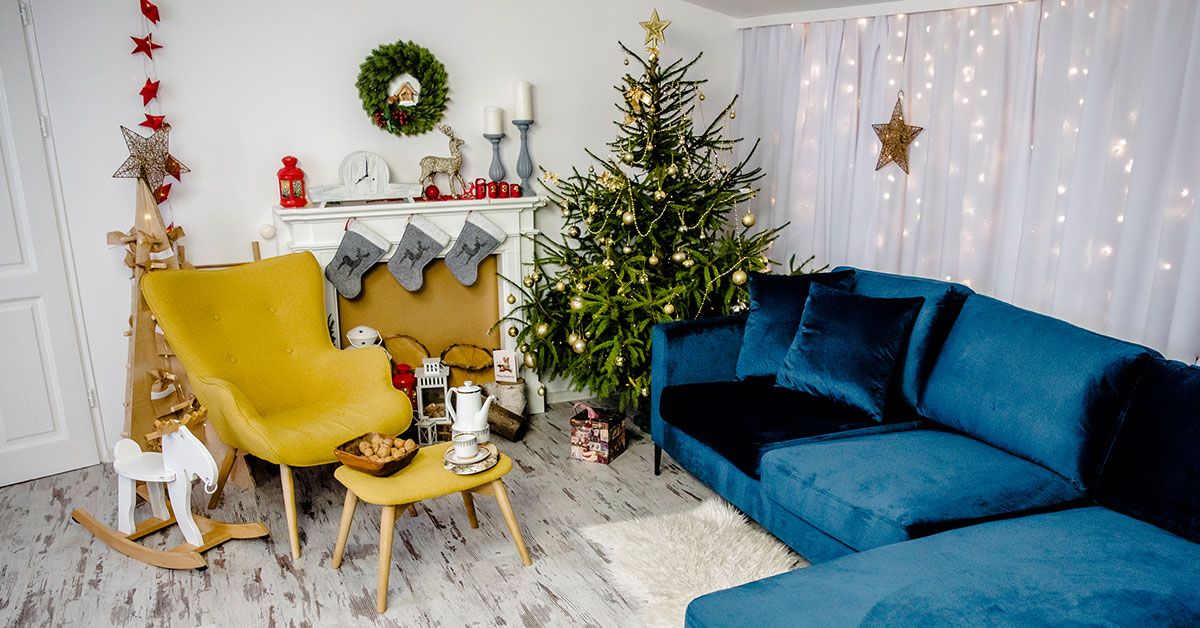
Choosing Colors According to Interior Style
Intense sofa colors can be adapted to the existing interior style. Harmony with the color palette of walls, floors, and accessories is crucial. A green sofa pairs well with natural materials, while red emphasizes the boldness of modern interiors. It's essential to maintain balance and avoid exaggeration, integrating intense colors with the rest of the space. For example, in an industrial arrangement, red can be complemented by metallic accents, creating a cohesive design.
Matching intense sofa colors to the interior style can also involve choosing specific textures and materials. For instance, a green sofa in a Scandinavian style might be covered in a delicate material like wool, while a red sofa in an industrial decor could have a distinct and rough texture.
Sofa as the Central Element of the Interior
An intense sofa can become the focal point of the space, capturing attention and giving the room a unique character. It's an excellent way to express personal style and creativity. A neutral background highlights the intensity of the color, allowing it to fully blossom. Simultaneously, elegant accessories can complement the sofa, creating a cohesive composition.
When choosing an intense sofa color, consider whether it should be the main attention-grabbing element or if it should harmonize with other decor elements. A green sofa can be like an oasis of calm in the room, while serving as the axis around which other elements of the arrangement revolve.
Color Balance
Introducing an intense color requires maintaining balance in interior design. Subtle accessories, such as cushions or rugs, can help emphasize the sofa's color intensity. Choosing accessories in muted colors makes the interior cohesive and aesthetic. Balancing color intensity is an art that requires attention to detail, but the effect can be stunning, combining boldness with subtle beauty.
Color balance is also crucial in the context of interior lighting. Bright light can make intense sofa colors appear deeper, while soft light can act as a subtle accent.
Neutral Background as a Contrast
The contrast between an intense sofa and a neutral background is a key element of successful interior design. Neutral walls and floors allow the intense color to capture attention, creating an impressive interior. Contrasting additional elements, such as white cushions or lamps, add dynamism and refinement. Thanks to contrast, the intense color becomes even more striking, emphasizing its uniqueness.
Experimenting with different types of contrast is worthwhile. In an industrial arrangement, an intense sofa can contrast with raw walls or concrete floors, creating a unique and dynamic environment.
Use of Additional Decorative Elements
Introducing an intense sofa color opens the door to creatively using decorative accessories. Pillows, rugs, and even paintings can be elements that highlight the chosen color, creating a cohesive and characterful space. These accessories not only complement the arrangement but also allow for easy redecoration in the future, without the need to replace the main piece of furniture.
Additional decorative elements can also be a tool for creating seasonal changes in the arrangement. Bright accessories on an intense sofa work well in spring and summer, while deep shades are suitable for the cooler autumn-winter months.

Choosing Color Based on Room Size
The size of the room significantly influences the choice of sofa color. Light, intense colors can visually enlarge the space, while deep colors add coziness. When choosing a sofa color, consider the proportions and functionality of the space. Light colors are ideal for small rooms, adding space and lightness. In larger spaces, deep colors can create a more intimate atmosphere, defining zones within the room.
When choosing a sofa color, also consider the shape of the furniture. In small rooms, consider sofas with clean lines that won't overwhelm the space. In larger spaces, opt for more elaborate models, adding additional decorative elements.
Color Psychology: How Colors Affect Moods
Understanding color psychology is crucial in interior design. Cool colors like blue or green introduce calmness and freshness, while warm shades like red or orange can create a warm and cozy atmosphere. The intensity of the color affects emotions, and muted tones are often associated with elegance and tranquility. When designing an interior, consider what emotions you want to evoke, matching the sofa color to the intended effect.
The color scheme of an intense sofa can also be adjusted to the season. Bright colors can bring freshness in spring, while deep shades are suitable for the autumn atmosphere. Different colors can also affect the perception of the room's temperature – warm colors add a feeling of coziness, while cool shades create a sense of freshness.
A vibrant palette of intense colors on a sofa is not just a furniture choice but a true art of interior design. Well-chosen intense colors give character to a space, eliciting desired emotions and moods. Balance, harmony, and creativity are crucial when opting for intense colors in our interiors. In the end, sofas become not just pieces of furniture but the main actors in the theater of our home, adding unique charm to every room. Let's boldly experiment, creating interiors that reflect our individuality.
